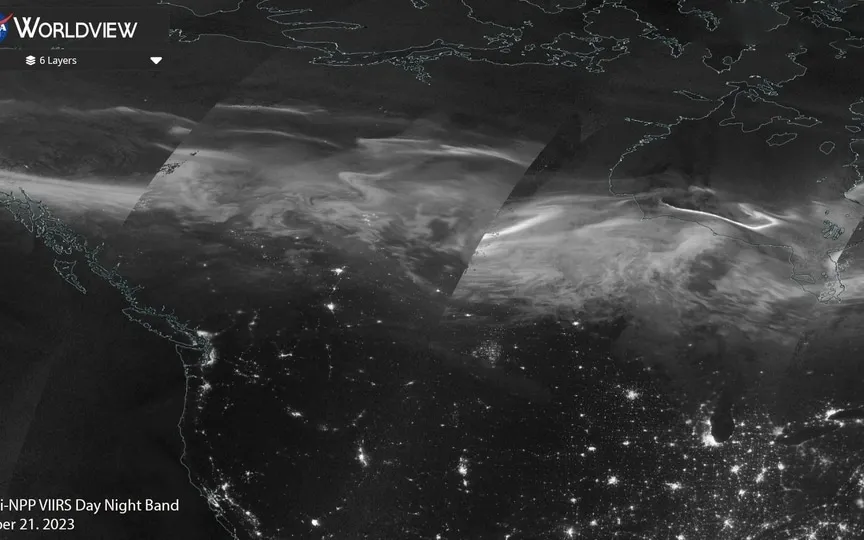NASA Reports Major Impact of Solar Storms on Earth
Astronomers and space weather physicists are puzzled by the solar storm event that occurred on October 20. The storm was caused by two coronal mass ejections (CME) that grazed the Earth instead of directly hitting it. These CMEs were relatively small and not expected to carry a significant amount of solar matter or electromagnetic charge. However, their impact was unexpectedly strong, surpassing some of the most powerful CMEs observed in recent times. This is confusing because forecasters had predicted a G1-class intensity for the storm, and although it was indeed classified as G1, the aurora display it produced exceeded the expected intensity for that category. A NASA image, shared by a NOAA institute, now reveals the widespread effects of the solar storm.
Image shared by NOAA’s Cooperative Institute for Meteorological Satellite Studies (CIMSS) at the University of Wisconsin-Madison. The institute created a composite image using NASA Worldview and added six different layers to capture the full spectrum of the northern lights. When it was released on X, the official account said: “Awesome! We weren’t able to download the polar orbit data live on Saturday due to a power outage, so here’s a composite view of the Aurora from space via NASA Worldview.
The NASA image shows the impact of the solar storm
In the image, you can see the aurora borealis moving across the United States, splitting the nation in two. The spread of the aurora intensifies in the center and thins out along the coast. Interestingly, astronomers in the middle zones have reported seeing two fully developed auroras, one red and one green, and they have also been able to see an extremely rare orange color aurora created by mixing red and green (the orange color of aurora is not naturally formed).
But why did this solar storm show such intense aurora? Space weather student MaryBeth Kiczenski shared a photo of the Kp chart and highlighted the ESW (east-southwest-west) cord as the storm’s culprit. For the uninitiated, the direction of the magnetic fields produced by a CME impact can often exaggerate the effect, as some specific directions are weak in resisting incoming radiation and electromagnetic waves.
Space weather physicist Dr. Tamitha Skov also responded to the post with the same sentiment, saying: “This is why such a weak #solarstorm made such a big impact. It’s one of only two directions in the flux rope that can take such a big hit.”




